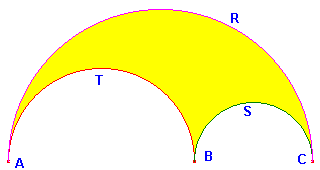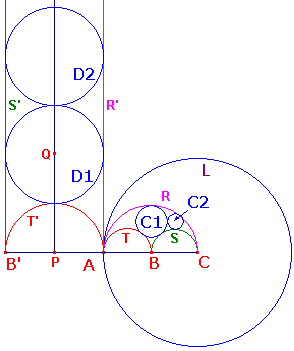


|  |
|
The Arbelos
If three semicircles R, S and T
touch at A, B and C,
This result is called the arbelos since the shape bounded by the semicircles
|
 |
| Proof As usual, we invert the picture in a well-chosen circle.
Let L be the circle centre C, passing through A.
Now it is clear that we can draw D1 touching
It is easy to see that we can add a further circle, D2,
When we invert these in L, we get the required Cn.
|
 |
| The CabriJava plane allows you to experiment. The first five circles of the chain are shown. Drag A, B or C to change the picture. A web page just for the arbelos
|
| Main inversive page |